
Legends of 420: Weed’s Top 5 Ancestral Families
If you don’t know your weed history, you don’t know where you are from.
To mark the 50th anniversary of 420, at Leafly we have created five expertly reported lineage genealogies that capture most of the 50 most popular cannabis strains on shelves today. Celebrate the legendary Stoner Holiday by picking up on a legendary strain and learning how it was made by some of the smartest growers in the cannabis industry.
This ancestral family genealogy – and the posters we made – are like CAT scans of contemporary weed culture. Understanding how large families are connected allows you to decipher the myriad of new crosses and buy and smoke like a pro, with the sense of place and time deepening your high.
This isn’t just an effective craft beer sniff. Cannabis is an American industry with sales of $ 18.3 billion and 321,000 employees. Trending strains are million dollar pieces of intellectual property that make and break the careers of breeders and growers. There are thousands upon thousands of varieties, with hundreds of new ones seemingly coming out every week.
So we gathered the best cannabis journalists in the world to consult key sources and write first drafts of weed history that could be credibly placed in the Library of Congress. Check em out:
5 legendary ancestral families
What is a family of marijuana?
Weed tribal families are similar in many ways to human families. Just like humans, cannabis comes in two genders, male and female (mostly – like humans, cannabis can also contain intersex genes which have led to amazing strains like Cherry Pie).
Male pollen usually fertilizes female pistils and results in offspring (seeds) that mix the genes of both parents.
While modern humans prefer random love games, cannabis breeders choose marijuana partners for traits they’d like to see in children, like pungent aroma and high THC potency.
Certain offspring of marijuana (or “crosses” or “hybrids”) look, smell, and feel so desirable that breeders keep selecting and crossing them, creating large families of different strains, all of which contain some genes from the parents .

The original Haze lines from the 1970s, Santa Cruz, CA Haze Brothers, started the Haze family of tribes These now include Blue Dream, Super Silver Haze, Super Lemon Haze, and Jack Herer.
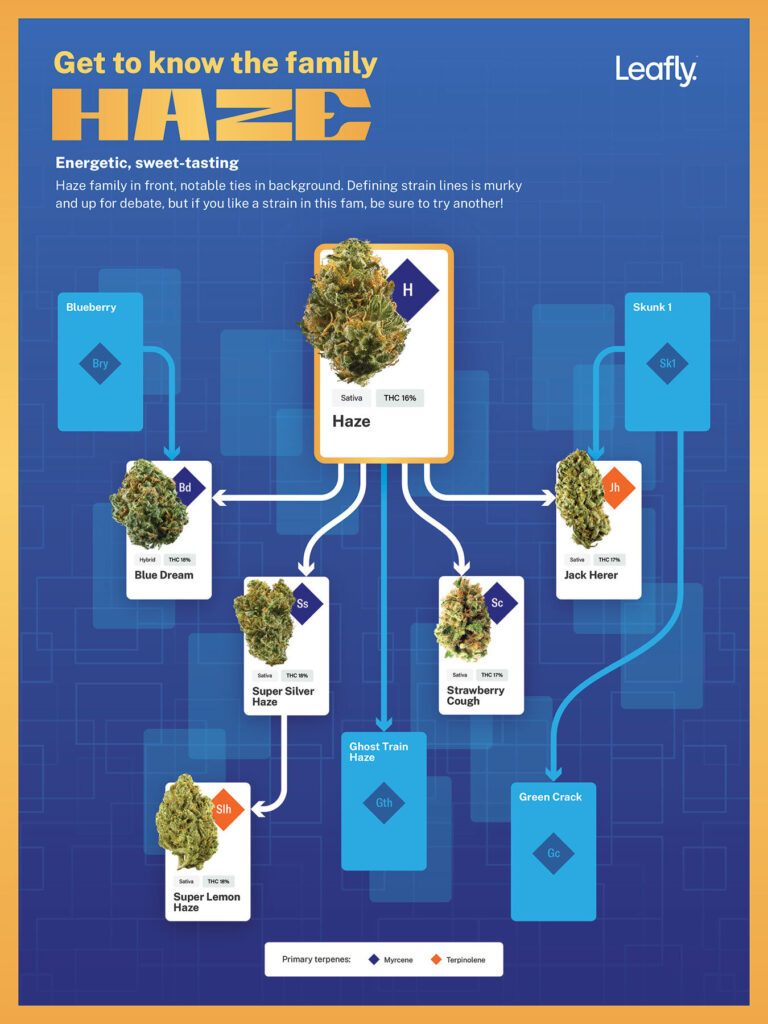
The original ’70s Mendo Purps led to today’s Purps family These include Granddaddy Purple, Grape Ape, Cherry Pie and so on.
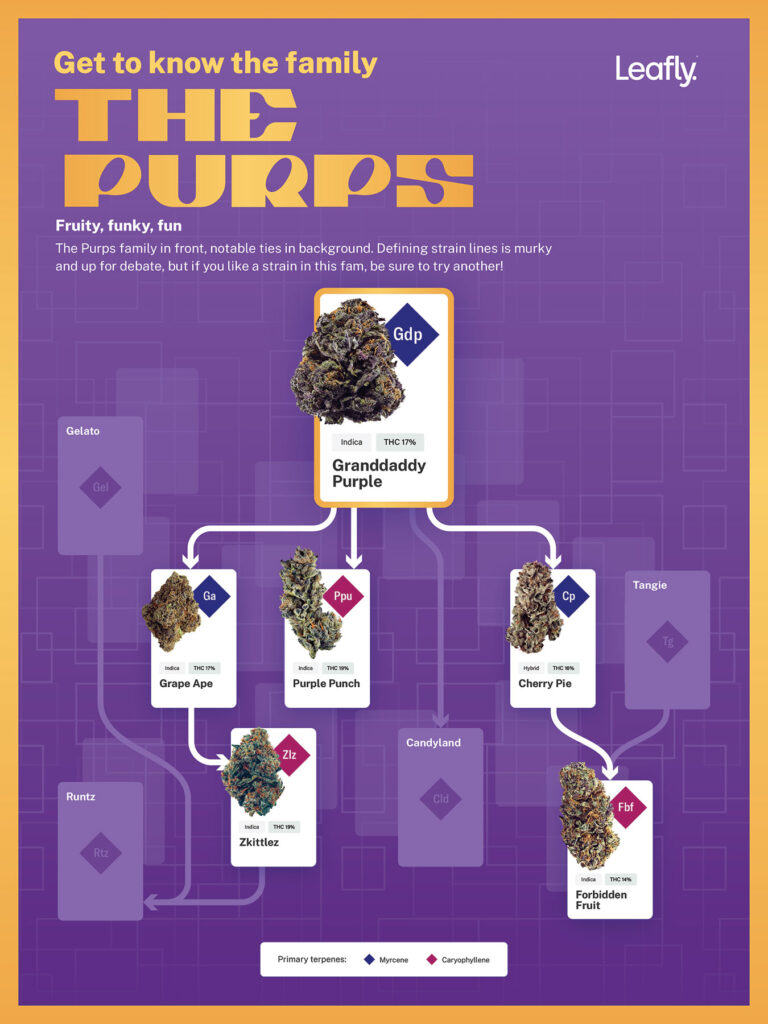
The OG Kush family began in the mid-1990s with a mysterious Florida clone from Silver Lake, California that took over the state and then the world.
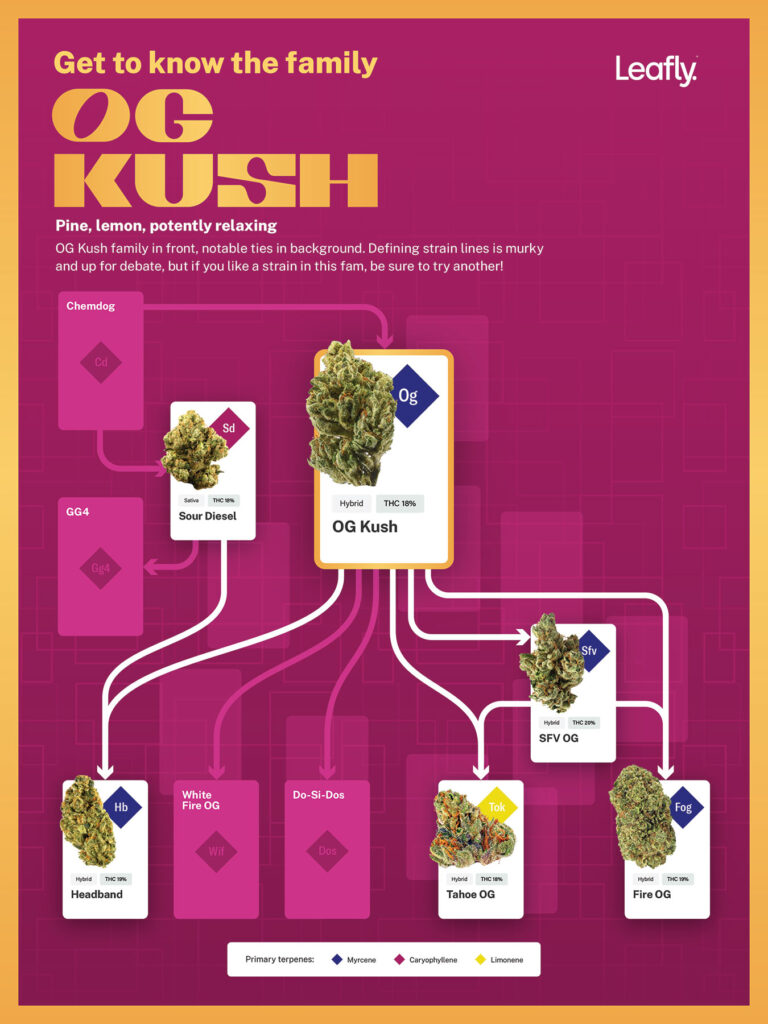
The first Tangie in the 2000s near Yosemite, CA resulted in a whole Tangie family with Sour Tangie, Clementine, Mimosa, Forbidden Fruit and Squirt.
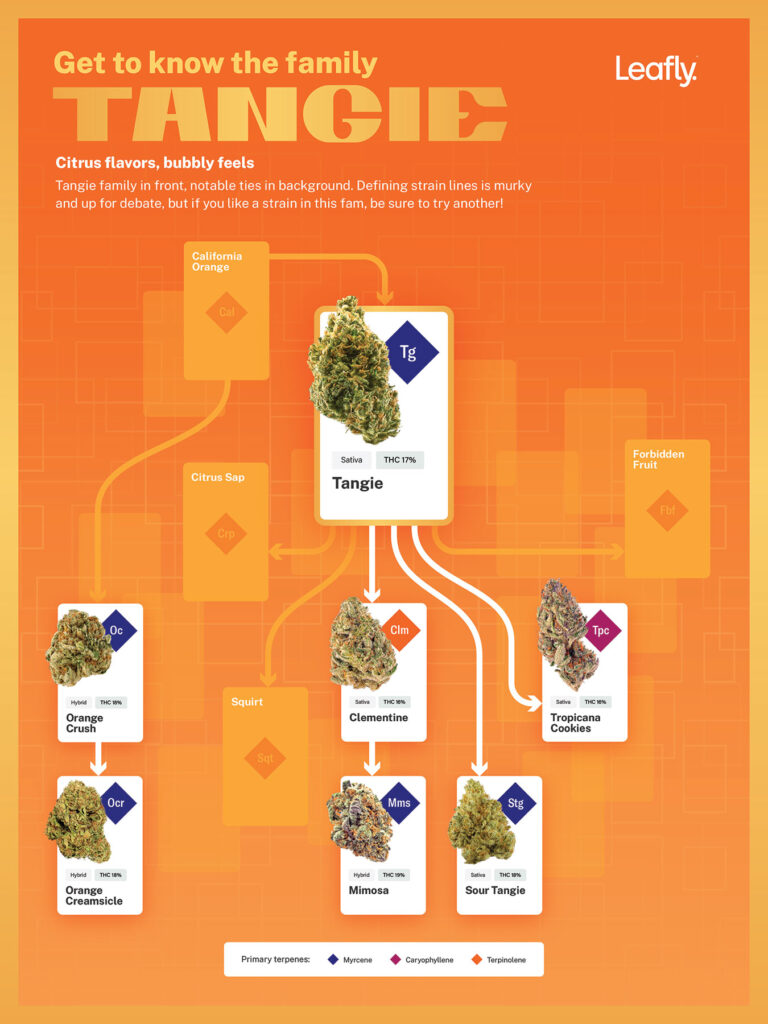
And the Cookies and cakes family started Girl Scout Cookies (aka GSC) in San Francisco in the mid-200s, which resulted in Sunset Sherbert, Gelato, Wedding Cake, Runtz, and more.
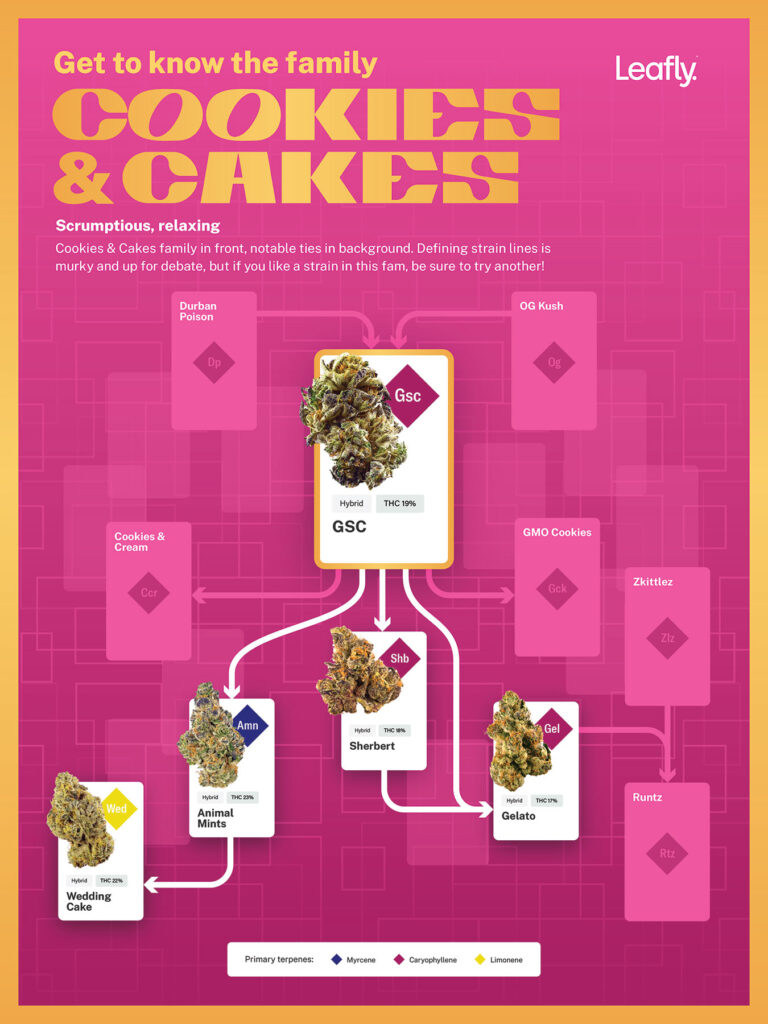
Who are the people behind the trees?
Every strain you smoke started in the mind of a loving, slightly obsessed breeder. Like, “Ooooh, I want to take the citrus in Tangie and add the moisture from the cherry pie.”
Boom – Forbidden Fruit.
Our trade journalists reached out to these breeders to get the story of cannabis right out of the mouth including:
- Haze is Arjan Roskam, Co-founder of Green House Coffeeshop and Green House Seed Company;
- Purps’ Todd McCormick at Authentic Genetics;
- Tangie’s Crockett from Crockett Family Farms;
- AND Kush’s Josh “Josh D” Del Rosso;
- Sunset Sherberts Mario “Mr. Sherbinski” Guzman;
- and many, many others.
It’s hard to imagine legalization spreading in 2021, but these often pseudonymous breeders have faced life sentences under prohibition laws. Thank you to all the breeders who answered our DMs, picked up the phone and shared some stories and photos.
The book cannabis revisions awaits
There is no international body that mediates stress claims. It’s free for everyone, and weed genealogists have to be private investigators.
Leafly has done a solid job on a dedicated budget, group of pro reporters, and plenty of time. Yet this project faced the constraints of time, memory, prohibition, commercial competition, and old-fashioned human error.
We found that most of the conflicts in the stress history are due to several factors:
- Two or more breeders naming different strains with the same name. For example, two breeders sell two grape monkeys, each with different parents.
- Two or more breeders, breeders or sellers naming the same variety have different names. For example, most OG Kush varieties come from a few core types.
- Taxonomic Confusion – Cannabis is full of 3-, 4-, and 5-way crosses and backcrosses. For example, GSC’s ancestry is “F1 Durban” by Flo Rida OG. Many places simply list it as Durban. Tropicanna Cookies “F1” were from Harry Resin from Bloom Seed Co, while Tropicanna Cookies “F2” were from Oni Seeds.
- The fog of prohibition and trade. First parents are lost – no one knows what OG Kush’s parents are. Or today trade secrets prevail – Archive Seeds won’t divulge some parents.
We expect other weed historians to stand on our shoulders and do better. Even then, the breeding drama is eternal.
There are other ancestral families to map
This rewarding, long overdue project has us moving more genealogy mapping and empowering more buyers in 2021 and beyond.
Keep an eye out for our Skunk family genealogy in the future. And hopefully we’ll dive deep into:
To a historic and happy 420! We hope you enjoy it.
Let us know how we did it and recommend other important families in the comments below.
David Downs
David Downs directs news and lifestyle coverage as chief of the California Bureau for Leafly.com. He has written for WIRED, Rolling Stone and Billboard and is the former cannabis editor of the San Francisco Chronicle and author of several cannabis books including ‘Marijuana Harvest’ by Ed Rosenthal and David Downs. He is the co-host of the Hash Podcast. TW: @davidrdowns | IG @daviddowns
Show article by David Downs
The latest from varieties and products
Show everything
By submitting this form, you will receive messages and promotional emails from Leafly and agree to Leafly’s Terms of Use and Privacy Policy. You can unsubscribe from Leafly email messages at any time.

Post a comment: